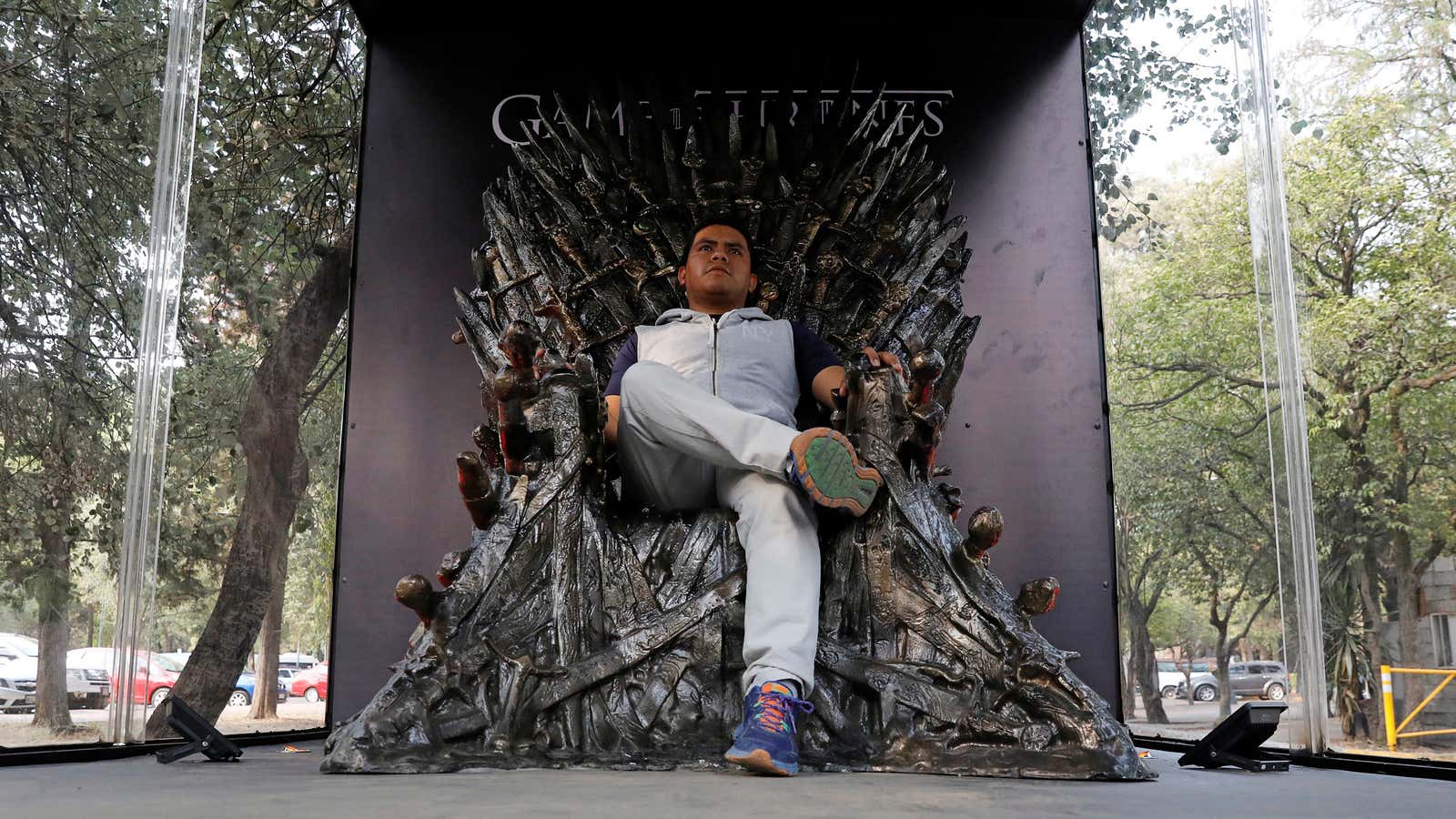About a decade ago, pop-media narratives were characterized by a near-obsessive reimagining of the villain and hero archetypes. Audiences were captivated by the likes of Walter White, Thanos, and Cersei Lanister, and their portrayals not as two-dimensional cretins, but as wayward folk making rational decisions that resulted in horrible consequences. Much of this content’s success was in redrawing the “bad” guys—and often the “good” guys—with the relatable nuance of Tony Soprano, the gangster whose panic attacks landed him in therapy.
Then came the 2016 US presidential election.
The flood of relatable villains slowed to a trickle as the rise of authoritarianism and nativism seized our attention in real life; as we hosted heavy conversations about systemic racism and our roles in it; and as politically polarized newscasts rendered newsmakers with the dimensionless, cartoonish evil we’d recently claimed to be unrealistic, unfair, and unentertaining in scripted entertainment.
So what now? At a time when society is so frequently disgusted with the lead characters in the current cultural story, is the world ready for post-Covid, post-Trump, post-George Floyd antiheroes?
Ultimately, we’re in a complicated spot when it comes to our societal perception of motivation, authority, and power today. Are those with power fundamentally villains? Who is the underdog, if everyone thinks they’re oppressed? What is good intent worth, when every action results in collateral damage?
A bit of direction may rest in the halcyon days of the antihero
Historically, our society has paradoxically championed the seizure of power while vilifying those who have it. We generally don’t valorize leaders who abdicate; we don’t teach when to end a reign for the sake of the people. Julius Caesar, Steve Jobs, Anakin Skywalker…take your pick: each story tends to be about power being whipped to and fro, and never about leaders distributing their authority for the greater good.
As real-life business leaders, often villainized in their own right, face demands from board members, employees, investors, and customers seeking equity and action, the missing playbook for power redistribution is causing panic. It’s led some to reckon with racial inequity via abject fear and paralysis. Others are using big checks to assuage guilt and mask a lack of a plan.
But there are a handful acknowledging the virtuosity of releasing power, and they are doing the complicated work of resisting the same self-serving instincts that likely fueled their ascension to power to begin with. Perhaps shockingly, it turns out that it’s pretty easy—as soon as we prioritize the systems in which we participate over our personal egos.
Amy Edmondson, an expert in organizational strategy at Harvard Business School, pushes leaders to make this leap with a few specific leadership behaviors: framing the tasks at hand as learning problems; acknowledging your own fallibility; modeling curiosity. These three tactics, she posits, help us to overcome our instinct to hoard power by proactively making space for the voices around us to contribute.
What you can do now to redistribute power
When we refute the misleading narrative behind the success scarcity myth, we acknowledge the moral and ethical imperative of power redistribution for what it is: decision-making rooted in long-term thinking and the improvement of systems larger than ourselves. We acknowledge the counter-cultural truth that “success” by one’s self is not success at all.
But let’s get practical. You, dear reader, might be in the drivers’ seat of your organization. Or you at least know who is. You also know power redistribution is morally right, and you know it’s commercially smart. But what’s one thing you can do right now to actually redistribute power?
For starters, try passing the mic in five meetings this week.
Ask questions like “what would your decision be?” or “what does someone else think?” This kind of inquiry is a direct shot at the specters of racism, sexism, and the various other -isms and -phobias that plague the hallways of power. It also elevates the influence of the second and sometimes third person to speak up, whose contributions are often obscured by those who always speak up first and are often the beneficiaries of the power patterns we supposedly aim to disrupt.
It’s a classically antihero move—and fantastic exposure therapy for business leaders as they recognize that giving up small doses of power doesn’t kill you and it makes your organization stronger. This training can quickly accelerate you toward steps with greater impact, like introducing diversity-based performance incentives for you and your leadership team, or systemizing collaboration standards that disincentivize power-hoarding behavior in day-to-day work.
And that brings us back to pop culture, and what it’s reflecting about how our concepts of heroes and villains keep evolving. From the origin stories of Tom Hardy’s alien-hosting Venom to Emma Stone’s cleverly cool Cruella, we already are getting a sense of how Hollywood’s view of power and the antihero is evolving. Can the characters of the business world catch up?
Aaron Powers is a managing director at SYLVAIN, the strategy and design consultancy, and leads the company’s business growth in the US. He is also the host of SYLVAIN’s weekly podcast, “Critical Nonsense.”
